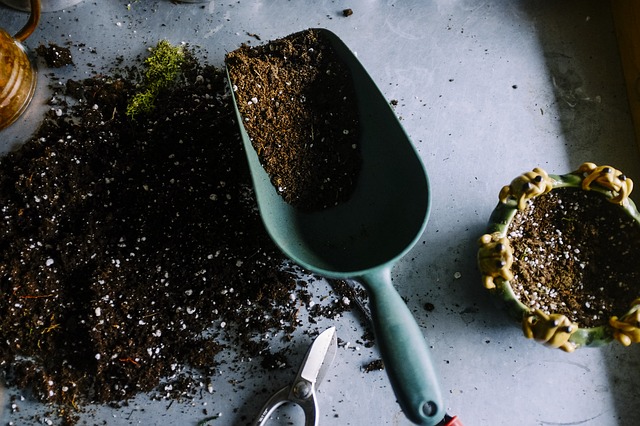How to clean garden pots without bleach?
I recommend cleaning pots before reusing them since illnesses might be passed from one potted plant to its successor. Despite the fact that bleach is the most efficient plant pot disinfectant, many people avoid using it due to its harshness. As a result, I’ll show you how to sterilize pots without using bleach.
Without Bleach, How to Sterilize Pots
You’re probably thinking of reusing the old pots in the new gardening season once the weather warms up. However, material has most likely accumulated within the pots, so sanitize them before potting a plant. Sterilization requires little work, but it is critical for the success of the potted plant.
The Importance of Cleaning and Sterilizing Old Pots
To begin with, any diseases carried by the previous season’s plant will be passed on to the new one. The residual soil is quite likely to have bacteria that will infect your new plant. Furthermore, the salt that accumulates inside the pot from the soil might dry the plant stems. As a result, properly cleaning old pots before reusing them is recommended.
In this scenario, home bleach is the most widely used disinfectant. However, as you surely already know, it’s a chemical, so it’s not the ideal choice. Fortunately, there are some safer alternatives that will effectively sterilize plant containers.
Pot sterilization is a simple procedure. Here are some chemical-free, yet highly effective and cost-effective cleaning ways for killing microorganisms on the pot surface. However, because not all garden pots are constructed of the same material, you should first evaluate which method will work best for your garden pot.
Start by physically removing any loose dirt from the pot, regardless of which of the following sterilizing procedures you choose. Scrub the inside with a brush after washing it with hot water. However, even when clean, the pots aren’t completely germ-free.
Before you start sanitizing your pots without bleach, make sure they’re clean.
You should wash your pots with soap and water before doing anything else. It’s better to soak them for a while to get the most dirt out of them.
You’ll Require
• Dish soap
• A scrubbing tool
• A dry rag
• A large sink or pail filled with warm water
Table of Contents
What Is the Best Way to Pre-Wash Pots?
Loose Soil Must Be Removed
Shake the pot upside down and gently thump it to get the soil out after emptying it. Scrub as much dirt as possible with a scrubbing implement, such as an old toothbrush. Using a dry rag, wipe it away.
Fill a sink or pail halfway with warm, soapy water.
To prepare a bubble bath, fill your sink or bucket halfway with warm water and add dish soap.
As many dirty pots as you can
You can soak many pots at the same time using one of two methods:
• The first is to submerge and stack pots one by one so that they can individually fill with water.
Allow them to soak
Allow the pots to soak for many hours, preferably overnight.
Remove Loosened Dirt with a Scrub
After the pots have soaked for a bit, scrape away any loose debris with your cleaning instrument.
Clean the Pots
Rinse each pot thoroughly to remove any soap residue. This is especially crucial if your soap has the potential to harm plants.
Soak them in vinegar
Vinegar is mild on the skin while still being acidic enough to destroy germs. It can be used on both clay and plastic pots.
• A large sink or bucket
• A scrubbing instruments
• White vinegar
• Warm water (optional)
Note that the water is just being used as a cost-cutting strategy. It will probably work better if you can use unadulterated vinegar.
Combine the water and vinegar in a mixing bowl
Combine warm water and vinegar in a large sink or bucket in a 1:1 ratio. The pot should be able to completely submerge in the solution.
If you don’t want to dilute your vinegar, go ahead and do so, but this is going to require a lot of vinegar!
Allow the Pot to Soak
Allow three to four hours for the pot to soak in the solution.
Clean it up
Remove any remaining stains or debris on the pot with an old toothbrush or another scrubbing implement.
Getting Rid of It
Rinse the pot well to ensure that no vinegar residue remains. Keep in mind that because vinegar is acidic.
Allow it to dry naturally
If you like, you can wipe the pot with a towel, but it’s much faster to just let it air dry. The greatest location is in direct sunshine.
Vinegar/Hydrogen Peroxide Spray the Pots
Another technique to use vinegar to disinfect pots is to simply spray it on. Using undiluted vinegar in this manner is more cost-effective.
You require:
• A dry towel
• White vinegar or hydrogen peroxide
• An empty spray bottle
• Water to rinse the pot
Anything can be killed by enough heat.
Because this procedure can melt plastic, it should only be used on clay pots.
You’ll Need
- An oven
- A baking tray
Baking Is a Good Way to Sterilize Pots without Bleach
- Preheat the oven to 350 degrees.
Preheat the oven to 220 degrees Fahrenheit (104 degrees Celsius). Most bacteria, viruses, and fungus can be killed at this temperature.
- To create place for the pots, you may need to remove a rack or two. Before the oven gets too hot, do this.
- The Pots Should Be Baked
- Place the pots on a baking tray and bake them for an hour in the oven.
- Allow them to cool off.
Pots and other gardening equipment should be properly cared for to ensure their longevity and to bring you joy when you see everything neat and tidy.

